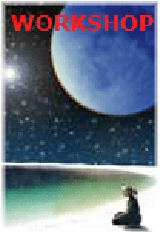
Extreme Relaxation - Good Sense or a Step Too Far?
Relaxation techniques and practises have been around for centuries. Today, in the rush for the most extreme forms of relaxation and rejuvenation, there may be some startling side effects.
Sensory Deprivation – Immersion and Submersion

Everyone has wished for a quiet moment away from the frenetic pace of modern society. A place with no sound, light or distractions of any kind; a place where nothing exists except the beating of your heart. Sensory deprivation and deprivation tanks have been in use since John C Lilly developed the world’s first sensory deprivation chamber in 1954. Immersed and floating in a tank filled with salt water that is the same temperature as your body; no light, no sound, and no stimulus, you are able to completely cut yourself off from the world for a while.
However, what happens to your brain if it is deprived of all sensory stimulation? Reports of hallucinations akin to that of being on LSD, and the feeling of the mind being totally separated from the body have been reported. Some people have even reported being in contact with alien life forms and being able to travel to different dimensions. Pretty interesting, but relaxing?
Fire Up and Cup Your Stress Away
Fire cupping or the use of acupressure therapy is also an ancient art. Small glass cups are heated and placed onto pressure points on the body. The heating causes a vacuum effect and the skin is drawn up into the cup. It is considered a form of deep tissue massage therapy and an alternative to the alternative art of acupuncture. The first fire cupping techniques involved a swab of material soaked in pure alcohol, which was set alight under the glass cup. The risk of burns, needless to say, was extremely high. Devotees report that fire cupping helps with stress relief as well as arthritis and inflammation.
Chill Out With Cryotherapy

Cryrotherapy is at the other end of the spectrum when it come to the use of extreme temperatures to relief stress and promote rejuvenation. Cryotherapy works on the metabolism at a cellular level using low temperatures; often well below freezing, to minimize pain, inflammation and cellular degeneration. You cannot just pop out to your local day-spa for a bit of freezing relaxation though. The most common use for cryotherapy is in medicine where cryosurgery has been used to destroy damaged tissue by using liquid nitrogen. Hilotherapy is more commonly used after plastic surgery to promote healing. Small areas of the body are subjected to lowered temperature to reduce swelling. You can however, book yourself into a cryogenic chamber for a full body suspension in icy water, which is said to promote wellness and relaxation. The Polar Bear Club do it every winter; just to break the ice.
Mesmerize Your Stress Away

There are a number of techniques involving hypnosis, transcendental meditation, and deep relaxation that are practised across the world. From the early days of Frank Mesmer, to the antics and illusions of Derren Brown, the world is fascinated by ways of achieving a higher plane of existence and being able to relax and rejuvenate in a harried and hurried world.
On the other hand, you can always make yourself a cup of tea and relax on the sofa with a good book.
About the Author
This alternative collection was provided by Alton Towers Breaks; Official provider of hotel deals for Alton Towers.
Disclaimer:
The above guest post is published based on the premise that it will be helpful and informative. The opinions made within it are those of the author and not of sunnyray.org. The links you may find within this post do not necessarily imply our recommendation or endorsement of the views expressed within them.
Comments:
Alain says:
07-22-2017
What about qigong? Why wouldn't one include qigong as an extreme relaxation technique. It is an ancient art of movements combined with breathing and mentally supported flow of energy. It can induce deep relaxation, in addition to increased balance and flexibility. Worth giving a try, believe me.














